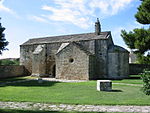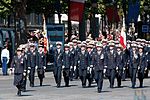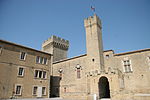Canton of Pélissanne
Bouches-du-Rhône geography stubsCantons of Bouches-du-Rhône
The canton of Pélissanne is an administrative division of the Bouches-du-Rhône department, in southeastern France. At the French canton reorganisation which came into effect in March 2015, it was expanded from 8 to 13 communes. Its seat is in Pélissanne.It consists of the following communes:
Excerpt from the Wikipedia article Canton of Pélissanne (License: CC BY-SA 3.0, Authors).Canton of Pélissanne
Rue des Bourbons, Aix-en-Provence
Geographical coordinates (GPS) Address Nearby Places Show on map
Geographical coordinates (GPS)
| Latitude | Longitude |
|---|---|
| N 43.63 ° | E 5.15 ° |
Address
Rue des Bourbons
Rue des Bourbons
13330 Aix-en-Provence
Provence-Alpes-Côte d'Azur, France
Open on Google Maps









